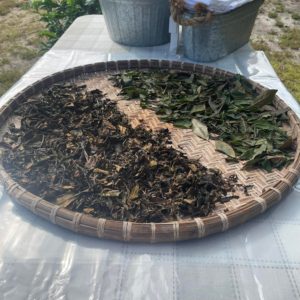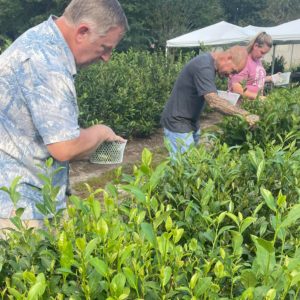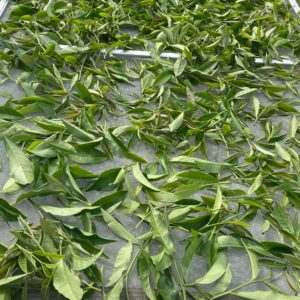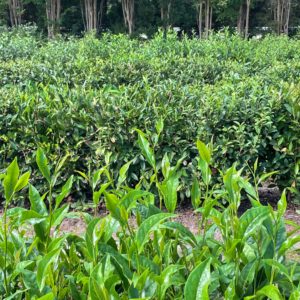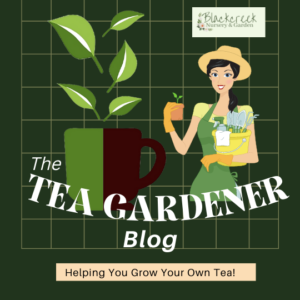
Most everyone is familiar with Tea, especially if you live in the south. If you ask most people below the Mason-Dixon line what kind of tea they drink most will say ‘Sweet or Unsweet’ and 90% want it iced. But what many people do not realize is that the tea we love to drink comes from one specific Camellia species – Camellia Sinensis. All tea, green, black, oolong, sweet, or unsweet all comes from the leaves of one plant. The way it’s processed is what determines the type of tea.
Our history in the nursery industry and growing Tea spans over 30 years. Being a wholesale and retail grower we have grown many plants but our favorite, and most prized is the Camellia species. As a breeder, we are overly excited to produce new plants and as a grower/retailer, we are super excited to share them with our customers.
We are not a tea farm and we do not sell our own processed tea. We do grow the plants that make the Tea and we enjoy sharing our passion with others!
Because we were so entwined in Camellias, it was only natural for us to grow many different Camellia species. Camellia sinensis is just one of the many hundreds of Camellia species known to exist in the world today. But most people do not realize that it is the most important of all Camellia species if not all plant species.
I first became infatuated with Camellia sinensis as an ornamental plant. I loved the beautiful flowers that bloomed in the fall. I enjoyed watching the bees as they swarmed around the opening flowers collecting that last bit of pollen before the winter weather sets in.
In 2012, we started planting tea plants in a farm-type setting in rows out in a cleared field at my family home. We planted two rows with 100 plants in each row. We wanted to have enough just to harvest some seeds and take some cuttings. They did so well, that we increased it by another two rows, and finally in 2018, we planted the entire field with tea which came to about 1/2 acre. Our original goal was to have some to harvest for ourselves, and have the remaining tea plants for cuttings and seed production.
Teaching people to grow their own tea has always been a passion of mine. I have done many programs and talks on growing tea, but you can only get so much from a PowerPoint presentation. You lack the hands-on educational opportunities that talking to a group off-site can provide. In 2020, when we decided to open our nursery for Retail, converting the tea field into a harvestable field was the top item on my list.
Today we now have over 1000 tea plants growing at the Blackcreek Tea Garden and we have seasonal workshops during the summer to share our love of growing this remarkable plant! Of course, we are growing and making our tea – We don’t sell our processed tea but are happy to share it when available with our visitors!
Debbie Odom, Blackcreek Nursery & Garden
CLICK HERE for Tea Frequently Asked Questions!
Our Tea Classes
Throughout the growing season, which is June through August, we will offer various classes on Tea- some simple, some complex. Check out our Events and also sign up for class notifications!
Check Out the Blackcreek Garden Guide! Full of information on all growing things sprinkled with a few DIY projects! Also click below for more information form the Garden Guide on growing TEA!

